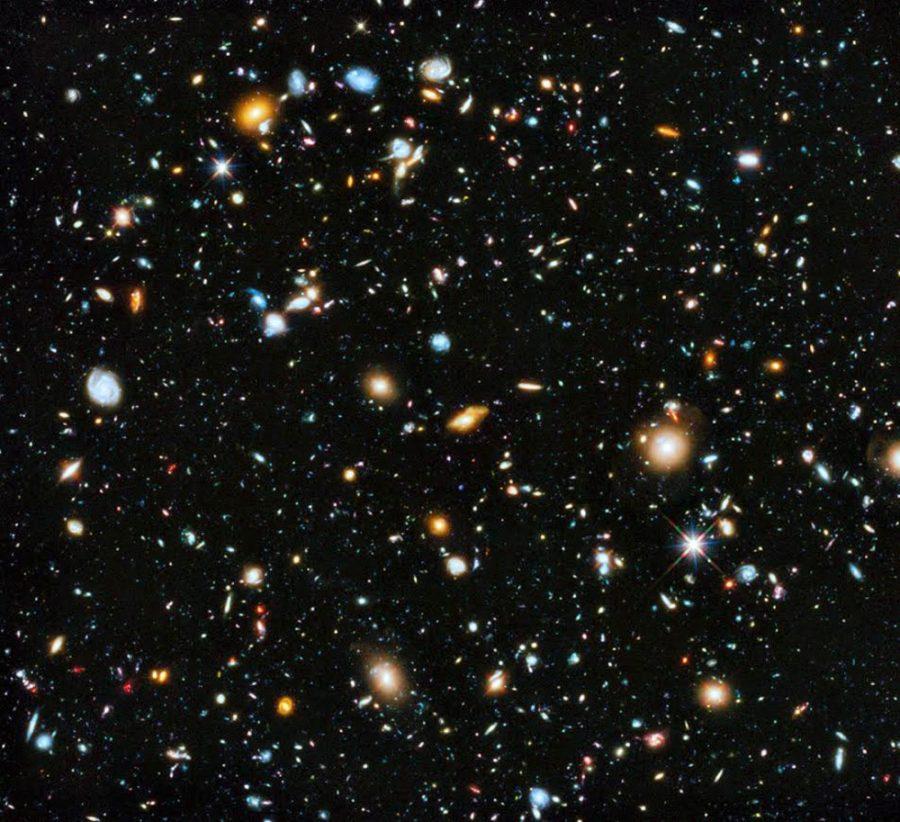A coalition of researchers across the United State and Japan, including researchers from the University of Arizona, found evidence of a giant gas planet beginning to form using the Subaru and Hubble telescopes.
Olivier Guyon, an astronomer at Steward Observatory and Professor of Optical Sciences at the University of Arizona, was the prime leader of the SCExAO instrument on the Subaru Telescope.
“We started gaining interest in this object from the images coming from the instrument I manage, the SCExAO instrument on the Subaru Telescope,” Guyon said. “Hubble came in a bit later because once we saw there was maybe something, we looked at Hubble data and we took more Hubble images … . We essentially went back in time and looked at archival data images that were from the Hubble Telescope that was taken several years ago and confirmed that Hubble had seen it.”
RELATED: France-Arizona Institute for Global Grand Challenges panel discusses land conservation efforts
The detected exoplanet called AB Aurigae b is still embedded in the protoplanetary disk of gas and dust that orbits the star AB Aurigae. Guyon mentioned that the fairly young star is approximately 500 light-years from the earth in the Auriga constellation.
How do stars and planets inherit their name?
“The star is named AB Aurigae. The Aurigae part of the name comes from the constellation. So, it’s a star in the constellation Auriga,” Guyon said. “AB is basically a numeric number for the star and it reflects that it’s a variable star and that it’s very young.”
“The name of the planet is essentially the name of the star with a ‘b’ after it. It’s a convention in astronomy; the first planet that we discover around the star inherits the name of the star and we add the letter b. Implicitly ‘a’ is the star itself and ‘b’ is the first discovered planet around the star,” Guyon said.
Another important researcher in the study is Kevin Wagner, who explained that his expertise is in examining young stellar systems, their environments, disks of gas and dust that are leftover from their formation. Also in particular, imaging these systems with big telescopes, high contrast imaging and high angular resolution imaging that help examine the environments in which the planets are forming.
RELATED: Meet Marcia Rieke, infrared astronomer who designed NIRcam
Wagner discussed how researchers are able to infer that a planet is forming with their infrared cameras.
“When planets form they are relatively hot like 1,000 Kelvin or 2,000 Kelvin, and at these temperatures, they glow greatly in infrared. So if you take an infrared camera and are looking at the Earth or people, which are a few hundred kelvins, you see us glowing. It works the same way with young planets, which are quite a bit hotter so it works a bit better,” Wagner said.
How do planets commonly form?
“We believe that most planets, especially planets in the inner solar system, form by starting with rocky cores, pieces of dust, pebbles and rocks sticking together and gradually growing massive enough so that gravity is able to attract gas.” Guyon said. “[This process, known as core accretion,] is not efficient at large distances from the star, it only works to form planets close to the star.”
Since the planet is located at a fairly long distance from its star, AB Aurigae, the scientists believe that the planet formed from an alternative theory known as disk instability. This formation mechanism occurs when “a piece of the disk if it is massive enough and not too hot, becomes unstable under gravity and collapses on itself and forms a planet,” Guyon said.
What’s next for the research team?
Guyon believes that now that they found this object, other teams will join and begin examining it as well.
“What excites me most is that we are building larger telescopes that will give us an image that is four times sharper and 10 to 100 times deeper in sensitivity,” Guyon said.
“We see a glow but we see some dust around it as well. It’s not a very sharp glow. We think what we are seeing is a planet that is being formed which is still surrounded by gas and dust,” Guyon said. So, with the new instruments and larger telescopes that are being created, scientists will be able “to peer deeper with sharper images and study the light that comes from the object in more detail.”
Both Wagner and Guyon are excited to study the planet more in-depth and to see if they can find other planets like AB Aurigae b. Wagner, in particular, explained that he is interested in examining the planet’s orbit and atmosphere.
Wagner also added that he is excited to find more objects like AB Aurigae b because “there is only so much you can learn from one object. When it’s the first of its kind you can learn quite a bit from that but you can’t get a statistical understanding or population-level understanding of these types of planets that are formed through disk instability and what they look like as a whole.”
Follow the Daily Wildcat on Twitter









